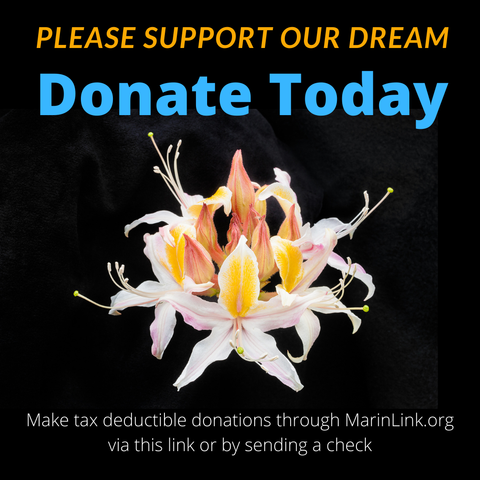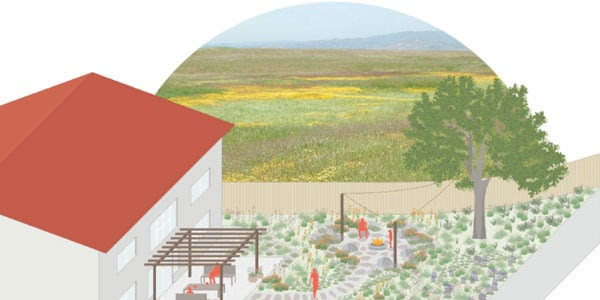Rob and I were so excited to watch the rain, and occasional downpours, return to wet California's extremely dry landscapes. Not the bomb cyclone of last year but we received almost 2 inches over several days.
Later that day Rob created this magical time lapse video of the clearing storm seen from our deck. He was looking southeast toward Oakland in the distance. Watch for the brief rain shower that crosses the screen near the end.
Now that we have had some rain, it is a good time to start planting natives in our garden.
The California Native Plant Society created a great online Garden Planner resource to help you learn what plants are best to plant for your area. They also just launched a new resource specific to the San Francisco Bay Area: Bay Area Garden Planner.
Meadow-inspired landscape design from Miridae Landscape Architecture and Construction
Bay Area Garden Planner
Bay Area native gardeners are lucky. Calscape just launched the brand-new Bay Area Garden Planner, designed specifically for the needs of gardeners in this region! Here, you can find customized plant lists that offer natural beauty, reduce water use, and support wildlife.
Each design palette comes with a gorgeous native garden design created by Miridae Landscape Architecture and Construction. Combining data and expert input from ecologists, designers, and horticulturalists, the Calscape Bay Area Garden Planner also takes into account genetic considerations, flammability, and appropriate climate.
This project was made possible by a grant from the Saratoga Horticultural Research Endowment, with special thanks to The Butterfly Net for lepidoptera-plant interaction data.
Ever wonder what the best native host and nectar plants for butterflies and moths are for your area? Check out The Butterfly Net website for a guide for anywhere in California.
Insects That Have Benefited From Our Native Plant Garden




Can you find the very young monarch caterpillar in the narrow leaf milkweed?
Everyday we would go out to check on the only two caterpillars we discovered on our native milkweed plants this year.
It was like a treasure hunt to find them, see where they had moved from the previous day, and note how much larger they had grown in that time.

13 days later the caterpillar was much bigger and easier to find.
 We were especially surprised by this huge dragon fly that came for a rest on our narrow leaf milkweed.
We were especially surprised by this huge dragon fly that came for a rest on our narrow leaf milkweed.
One of the most compelling reasons to plant local native species is that they provide essential food and shelter for birds, butterflies, and other pollinators.
~ Kitty Connolly
Excerpt from Kitty's short story: Wildflowers at Home in our wildflower book.
Do you love seeing our beautiful wildflower images?
Image if you can't see.

Please help us make our beautiful coffee table book accessible to the visually impaired through our unique audio-described version.


